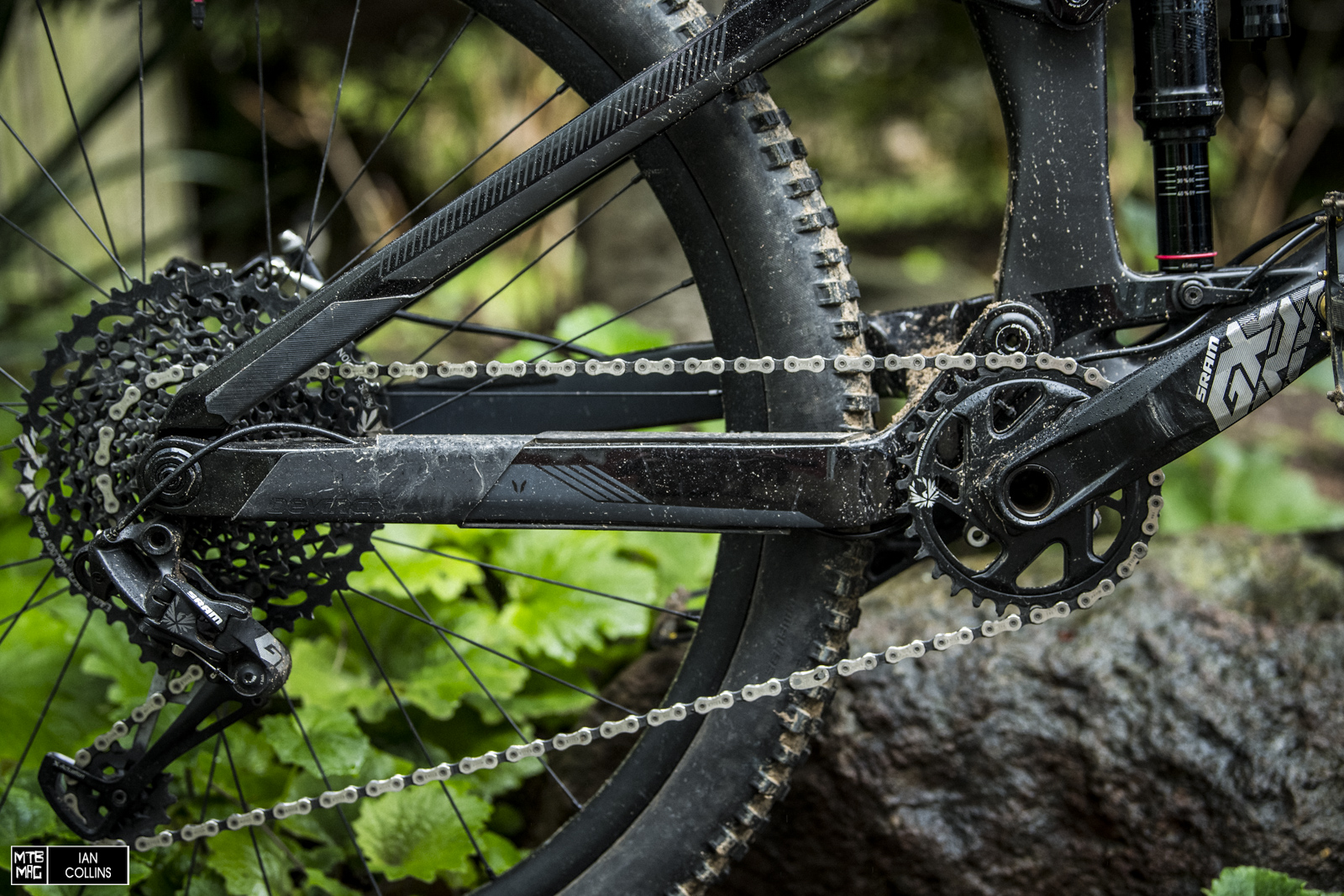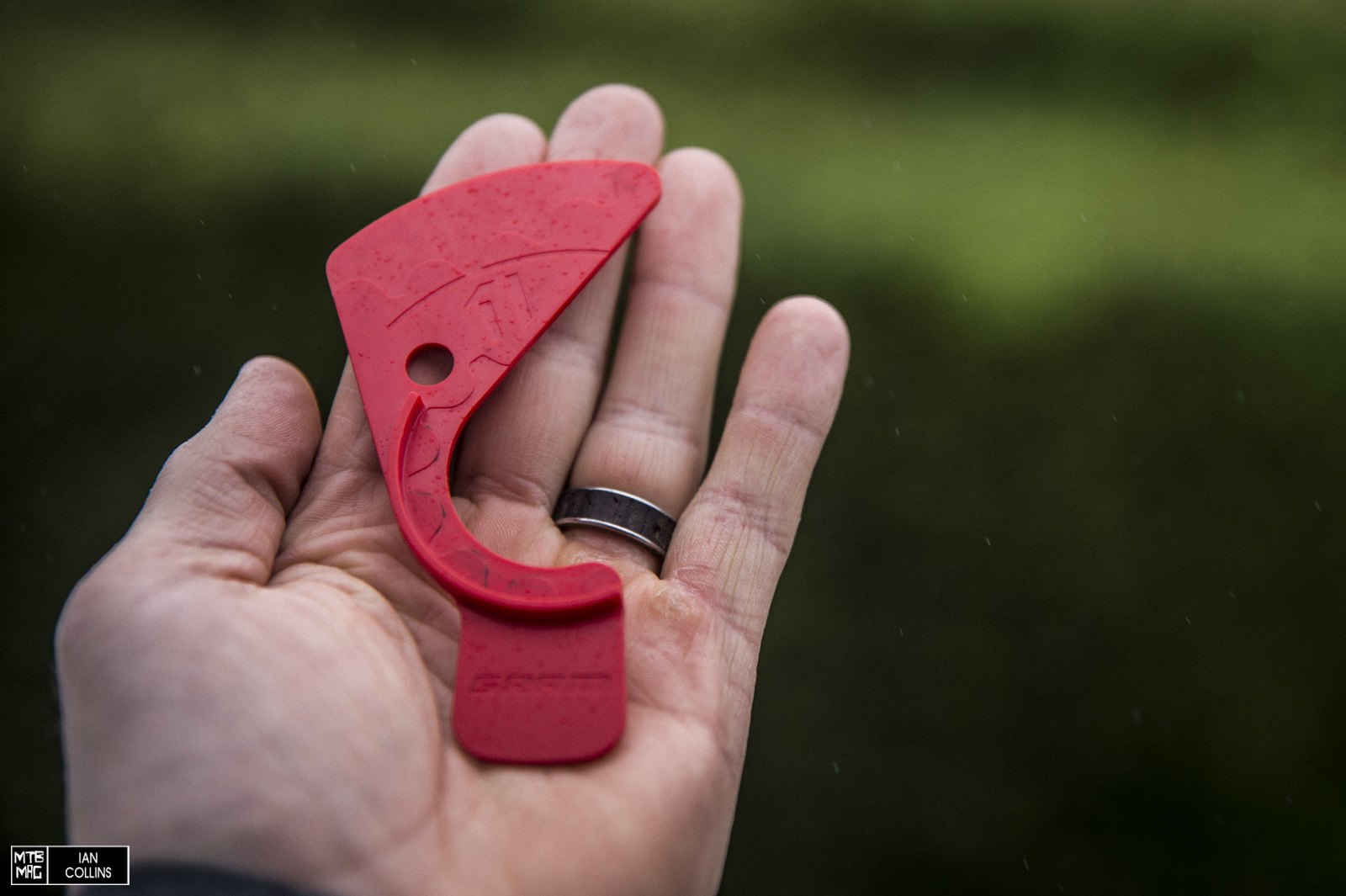Well over a year ago now, we tested SRAM’s GX 1X11 drivetrain…In short, we were not only impressed by how quickly SRAM brought XX1’s game changing 1X11 technology to the masses, but also by how closely the budget group’s performance matched that of the flagship group. Fast forward two years and we’re having a strange case of deja vu.

Details
• ~$499.00 USD (for less on CRC)
• 1734 grams (tested) *GXP/32T/175mm cranks
• 271 grams heavier than XX1 (roughly 3X the price)
• 500% Range
• 12 gears – 10, 12, 14, 16, 18, 21, 24, 28, 32, 42 & 50T

The chart above provides pretty much everything you need to know about GX Eagle in terms of weight, gearing and basic construction of each of the individual parts involved.

To bring Eagle technology down to a lower price point, something had to give in terms of manufacturing processes. The most intensive component in terms of design and manufacturing is undoubtedly the cassette. The X01 and XX1 cassettes are essentially a two piece design – the first 11 teeth are machined from one block and the largest gear is from a separate, single plate. By using 12 individual gears that are pinned together, SRAM was able to cut costs albeit at a minor weight penalty. At $195, the cassette is still the most expensive part in the group, but it is only 84 grams heavier than its $420 flagship counterpart.

The next major cost saving area is the crankset. The fairly simple, forged cranks bring the cost down from to a very digestible $120 compared to their$425 flagship carbon fiber counterpart . We’ll talk performance later, but keep in mind, there are also reasonably priced, hollow forged offerings from SRAM that strike a nice, happy medium in terms of price/weight/performance.

SRAM made some subtle tweaks to the tooth profile of their chainrings between 11 and 12 speed. It’s hard to hone in on the exact differences, but what is most visibly noticeable is that every other tooth has more of a hooked/curved profile.

Out back the architecture of the rear derailleur doesn’t appear to be much different. The GX Eagle derailleur is just 23 grams heavier than its XX1 counterpart, but it comes in at just $110 vs. $289. There are a handful of manufacturing efforts which bring costs down. More visually evident is the way that the parts are riveted together. Ditching a carbon fiber cage also saves some pennies as well. Anyhow, let’s talk about installation and setup.
Setup
If we had to nit pick something with Eagle in general, it’s that you have very little room for maladjustment. All in all, that’s fine but it means you need to be meticulous in your build, and bumps/scrapes to the rear derailleur have the potential to throw everything off. It’s also imperative that you have your derailleur hanger alignment perfectly dialed.

That’s a huge cassette…And thus, it’s also critical that you get your cable tension, limit screws and B-gap set correctly. With any drivetrain, but with Eagle in particular we’d recommend being extra mindful of making sure that your cable housing ends are trimmed properly in addition to keeping the cable/housing well lubricated. To make your life easier, we’d suggest spending $12 on a teflon coated shift cable as opposed to $2 on a standard cable. It will keep things moving freely. What’s that old phrase?…Penny wise, pound foolish?

Pictured above is the SRAM Eagle B-Gap adjustment tool. It’s important for setting up the proper distance between the cassette and derailleur via the B-Gap screw (the 3mm screw close to the mounting bolt). We could explain how it works, but you’re better off taking a look at this video outlining the process with legend Shawn “Wizard” Cruickshanks here.
On the Trail
Once set up and off to the trails we weren’t quite sure what to expect. We spent a lot of time on XX1 Eagle and are well impressed with it. At $500 though, we couldn’t quite see how on earth GX Eagle could even come close but boy were we wrong. From the get-go we enjoyed crisp, decisive shifting in both directions. One minor nuance is that you need to be somewhat gentle on the jump from the 42T to the 50T bailout gear; you can’t mash it. This also was true with XX1 Eagle, and it’s quite understandable as an 8 tooth jump is quite large. Still, it’s much better than dealing with a front derailleur and its inherent added complications in general. Besides, GX Eagle’s shifts are delivered much more quickly than any front derailleur is capable of. Speaking of front derailleurs, chain retention was flawless. It just gets better and better as SRAM continues to improve tooth/chain profiles. In our 5 month test period we never once dropped a chain. The cranks proved to be stiff enough that we just never really noticed them. Surely more money gets you lighter carbon fiber cranks that might be stiffer on paper, but we never felt any noticeable flex in the GX eagle cranks. They are reasonably light and tough given their price; all in all a solid, utilitarian part.

On the trail, in a blindfold test, we would honestly be hard pressed to detect a difference between GX Eagle and XX1 Eagle in terms of actual shifting performance. It really is that impressive. However, the only part that we might notice could be the shifter. The GX version is “Matchmaker” compatible, but it doesn’t offer the angle adjustment at the thumb paddle. This is something we’ve grown accustomed to with X01 and XX1, but it isn’t a deal breaker. The grip and ergonomics were still quite nice and if it is really that important to you, there’s always have the option to mix and match parts.

In terms of durability, we’ve been very impressed. After the fairly standard, initial cable stretch we took a few minutes to fine tune the tension and that was that. In 5 months of regular use, we stuck to our routine maintenance of general cleans and lubrication. We spent the better part of 4 months mainly riding in dust and grit, which isn’t all that nice on a drivetrain. As rain has finally begun to fall in California we’ve spent the last month riding in some less than ideal conditions…for a drivetrain anyway – it’s been great for us riders! The overall wear is about what we’d expect at this stage in the drivetrain’s life. A small amount of the anodizing has worn off of the cassette and chainring, but it’s continuing to deliver flawless shifting.
Overall
In the grand scheme of things, we have a hard time criticizing this drivetrain. XX1 Eagle was a game changer – from a manufacturing and design standpoint, it’s truly impressive how quickly SRAM trickled the technology down to the masses. In summary, GX Eagle delivers virtually the same performance as its flagship counterpart. Somehow it does so at just over one third of the price with a nominal half pound weight penalty. Although the phrase has been beaten to a pulp lately, this truly is the death of the front derailleur.







